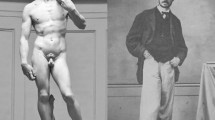Abstract
Bell’s Everett (?) theory is Bell’s interpretation of Everett’s theory, aiming to remove the picture of many worlds from the theory. In this paper, I argue that Bell’s Everett (?) theory as a one-world theory contradicts quantum mechanics and experiments. Moreover, I argue that a proper understanding of this theory also leads to a picture of many worlds, and this many-worlds theory agrees with experiments.
Similar content being viewed by others
Notes
Bell said that “if such a theory were taken seriously it would hardly be possible to take anything else seriously." [5]
In the final analysis, it is the law of motion, namely the Schrödinger equation that leads to the difference between the actual history and the recordable history. If the law of motion permited that the observer can record the whole history of her random jumps such as “up, down”, then there would indeed exist only one observer as BET assumes.
An initial, mainly critical analysis of this many-worlds theory was given in Gao ([11], Chap. 8).
References
Barrett, J.A.: The Quantum Mechanics of Minds and Worlds. Oxford University Press, Oxford (1999)
Bell, J.S.: On the hypothesis that the Schrödinger equation is exact. TH-1424-CERN, October 27, 1971. Contribution to the International Colloquium on Issues in Contemporary Physics and Philosophy of Science, and their Relevance for our Society, Penn State University, September 6–18, 1971
Bell, J.S.: The measurement theory of Everett and de Broglie’s pilot wave. In Quantum Mechanics, Determinism, Causality, and Particles, (ed.) M. Flato et al. Dordrecht-Holland, D. Reidel. pp. 11–17, 1976
Bell, J.S.: On the hypothesis that the Schrödinger equation is exact. Epistemological Letters, July 1978. pp. 1–28. Note that the title of this paper is “On the hypothesis that the Schrödinger equation is correct” in the table of contents, 1978
Bell, J.S.: Quantum mechanics for cosmologists. In: Isham, C., Penrose, R., Sciama, D. (eds.) Quantum Gravity 2, pp. 611–637. Clarendon Press, Oxford (1981)
Bell, J.S.: Speakable and Unspeakable in Quantum Mechanics. Cambridge University Press, Cambridge (1987)
Bohm, D.: A suggested interpretation of quantum theory in terms of hidden variables, I and II. Physical Review 85, 166–193 (1952)
de Broglie, L.: La nouvelle dynamique des Fields Quanta. In J. Bordet (eds.), Electrons et photons: Rapports et discussions du cinquième Conseil de Physique. Paris: Gauthier-Villars. pp. 105–132. English translation: The new dynamics of quanta, in G. Bacciagaluppi and A.Valentini (2009). Quantum Theory at the Crossroads: Reconsidering the 1927 Solvay Conference. Cambridge: Cambridge University Press. pp. 341–371, 1928
Duerr, P.M., Ehmann, A.: The physics and metaphysics of Tychistic Bohmian Mechanics. Studies in History and Philosophy of Science A 90, 168–183 (2021)
Everett, H. III: Relative state formulation of quantum mechanics. Reviews of Modern Physics 29, 454–462 (1957)
Gao, S.: The Meaning of the Wave Function. In Search of the Ontology of Quantum Mechanics. Cambridge University Press, Cambridge (2017)
Gao, S.: A puzzle for the field ontologists. Foundations of Physics 50, 1541–1553 (2020)
Gao, S.: Time Division Multiverse: A New Picture of Quantum Reality, 2021. http://philsci-archive.pitt.edu/20055/
Maudlin, T.: Critical study: David Wallace, the emergent multiverse: quantum theory according to the Everett interpretation. Nous 48, 794–808 (2014)
Vaidman, L.: Many-Worlds Interpretation of Quantum Mechanics. The Stanford Encyclopedia of Philosophy (Fall 2021 Edition), Edward N. Zalta (ed.), 2021. https://plato.stanford.edu/archives/fall2021/entries/qm-manyworlds/
Wallace, D.: The Emergent Multiverse: Quantum Theory according to the Everett Interpretation. Oxford University Press, Oxford (2012)
Acknowledgements
I am grateful to Jeff Barrett for helpful discussion. This work is supported by the National Social Science Foundation of China (Grant No. 16BZX021).
Author information
Authors and Affiliations
Corresponding author
Ethics declarations
Conflict of interest
The author declares that there is no conflict of interest.
Additional information
Publisher's Note
Springer Nature remains neutral with regard to jurisdictional claims in published maps and institutional affiliations.
Rights and permissions
Springer Nature or its licensor holds exclusive rights to this article under a publishing agreement with the author(s) or other rightsholder(s); author self-archiving of the accepted manuscript version of this article is solely governed by the terms of such publishing agreement and applicable law.
About this article
Cite this article
Gao, S. On Bell’s Everett (?) Theory. Found Phys 52, 89 (2022). https://doi.org/10.1007/s10701-022-00609-2
Received:
Accepted:
Published:
DOI: https://doi.org/10.1007/s10701-022-00609-2




